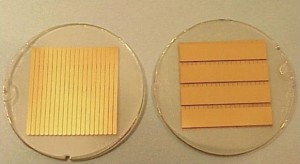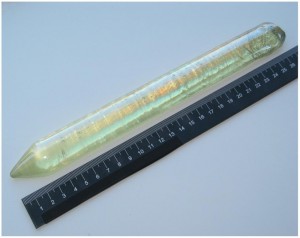Thallium bromide (TlBr) is a promising semiconductor for use as a direct gamma-ray detector for nuclear medicine applications, especially for positron emission tomography (PET). It has the potential to provide very high detection efficiency, excellent spatial resolution, low noise and high-energy resolution. TlBr has high-Z constituents, high density, a wide semiconducting bandgap, and based on recent progress with material purification and growth, can be produced with good charge transport parameters for electrons. A compact semiconductor detector operating at room temperature with high spatial resolution, high detection efficiency and good energy resolution would offer unique advantages over LSO, BGO, and CdTe/CZT, which are the most common gamma-ray detector materials in small animal PET applications. TlBr has better stopping power at 511 keV than any other material currently used in PET scanners, and high performance PET detector modules using TlBr could be utilized to build a scanner able to image substructures within the mouse brain, or to quantitatively assess tumor heterogeneity and microenvironment in a mouse cancer model.

Photograph of two faces on 0.5 mm thick TlBr detectors with orthogonal strip design. The area covered by both sets of strips is 10x10mm2. One set of strips provides very high spatial resolution (0.5 mm pitch), while the coarser strips placed orthogonally to the high resolution strips provide DOI.
The goal of this work, done in collaboration with Radiation Monitoring Devices, Inc. (RMD; www.rmdinc.com), is to develop high-sensitivity TlBr detector modules and associated electronics with intrinsic spatial localization of 0.5 mm in two dimensions and 2.5 mm in the third (depth) dimension. We are producing cross-strip electrode detector modules from existing high quality detector grade TlBr ingots grown at RMD by the travelling molten zone method. The ingots are large enough (30 mm and 50 mm diameter) to cut substrates from which monolithic 20 mm x 20 mm detectors can be fabricated. Our developments in process and design should produce usefully large-area and high-performance detector modules made from TlBr, aimed initially at providing the sub-mm spatial resolution and high detection efficiency needed for small-animal PET applications.


